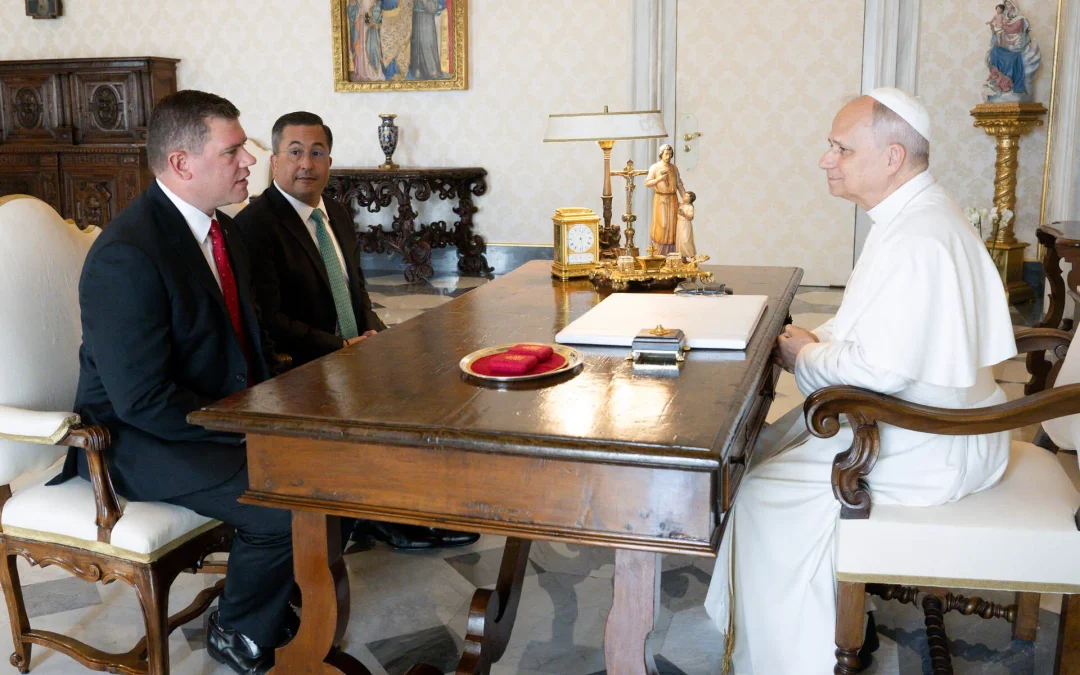In nearly 15 years of clinical psychology, it’s hard to imagine just how many people have expressed a deep longing to tangibly feel loved by God – to be able to truly rest in His presence.
One of the main obstacles to experiencing the kind of peace that emerges from a secure base of being loved by God is our thoughts. I’m sure you can relate to the following scenario: You go to prayer or attend Mass… after a little while though, you start thinking about the conversation you had with someone that didn’t go so well.
Next thing you know, you’re trying to solve the problem in your mind by thinking of all the things you could’ve said with a mind full of worry that the relationship is in trouble. Before you know it, Mass is over, and you’re more anxious than you were before it began!
In his incredible book He Leadeth Me, Servant of God Fr. Walter Ciszek accurately describes this phenomena when he writes “The human mind is restless and it cannot be confined. It will go on, every waking hour, thinking of something, or dreading some future happening with present fear and anxiety. You can control this restlessness, you can channel it, but you cannot stop it.”
If we want to experience the love of God and the peace that comes with it, then we need a practical means of getting control of our ruminating mind. And Catholic Mindfulness is a tool that we can use for this.
Mindfulness is simply “paying attention to the present moment without judgment or criticism.” In other words, it’s a brain exercise that trains our “focus muscle” – a psychological skill we can learn to help us gain autonomy over what’s between our ears.
Once we know how to return to the present moment, we are free to live out of an awareness of the presence of God where Divine Intimacy happens leading into deeper peace and a felt experience of God’s love.
Together, let’s look at five “focus muscle” exercises designed to help us move from an anxious, doing mind, to a peaceful, being mind. These five practical techniques, rooted in a Catholic anthropology and spirituality, can help you live more freely as a child of God.
5 Catholic Mindfulness Techniques To Bring Calm When You’re Anxious
1. Come Back to the Present Moment
Mindfulness isn’t about escaping life—it’s about fully living it. Whether you’re folding laundry, stuck in traffic, or kneeling in Adoration, your mind will wander. This is normal. The discipline is to gently and repeatedly return your attention to where you are.
Whenever you start to feel like your mind is a runaway train, stop what you’re doing and: Name one thing you see, one thing you hear, and one thing you feel.
When you notice what’s around you—the sound of birds, the feel of a breeze on your face, the way the light enters the room – you’ll bring your mind back to the now, where God actually dwells.
God told Moses, “I Am Who Am”—not “I was” or “I will be.” God is in the present moment.
2. Anchor Your Body to Anchor Your Mind
God made us body, mind and soul—so when your mind feels off, your body might be the best place to start. When you feel anxious or overwhelmed, body awareness can act as a stabilizing force.
Here’s how to try it:
Place your feet flat on the floor and sit upright but relaxed. Take a slow breath in through your nose, hold for a second, and then exhale gently. Feel the breath move through you. Notice the weight of your body on the chair. This is not about emptying your mind. It’s about filling it with what’s real.
Why does this matter? Because trust in God is not just an idea. It’s something that can be felt. Our bodies have stress responses that kick in automatically, but practicing mindfulness calms the nervous system and retrains the brain toward peace.
3. Observe Your Thoughts
Anxiety thrives when we get caught in our own thoughts. You’ve probably noticed this: You’re trying to pray or focus, but suddenly your mind is racing with what-ifs, regrets, or imagined conversations. Catholic Mindfulness teaches a radical truth—you are not your feelings.
The problem isn’t having anxious thoughts; the problem is judging those thoughts, resisting them, or trying to force them away. That’s like swimming harder in quicksand. Instead, Catholic Mindfulness invites you to observe those thoughts without getting tangled in them.
Try this:
When a negative or anxious thought appears, picture it like a comet shooting across the sky. You see it, acknowledge it, and let it float by without grabbing onto it. This mental posture isn’t passive—it’s disciplined.
4. Reconnect with God through Curiosity
Bring God into the conversation taking place within your mind.
Next time you find yourself spiraling into anxiety, pause and invite God into the conversation “Ever present God, here with me now, help me to be here with you.”
Then explore with curiosity what is happening within you. What do you feel? Have you ever felt this before? Why are you responding to the situation in this way? All the while, asking God to be with you, to treat your emotions as a messenger rather than a part of your identity.
5. Notice the Goodness Around You
Anxious thoughts often drown out the gifts God is offering you in the moment. Catholic Mindfulness encourages the practice of savoring—consciously noticing small moments of beauty, joy, or grace that you might otherwise miss.
You might feel too busy to do this. But the truth is, when you’re present, beauty reveals itself everywhere:
● The warmth of your child’s hand in yours
● The taste of your morning coffee
● The sunlight hitting your kitchen counter
● The unexpected quiet between appointments
Gratitude is a natural fruit of mindfulness. When you notice these moments and thank God for them, you’re not just enjoying a perk—you’re practicing trust. You’re telling your brain, and your soul, “I am not alone. God is here.”
Final Thought: You Are Not Your Thoughts
Jesus didn’t come to condemn your restless mind—He came to redeem it. Catholic Mindfulness is a tool that helps you cooperate with grace.
So when you’re overwhelmed, distracted, or spiraling in your mind, remember these five techniques. Use them as a tool to freely live in the present. Because, with practice, you can learn to experience peace—even in the storm.
Learn more about Catholic Mindfulness HERE.
Image: Photo by Joice Kelly on Unsplash











